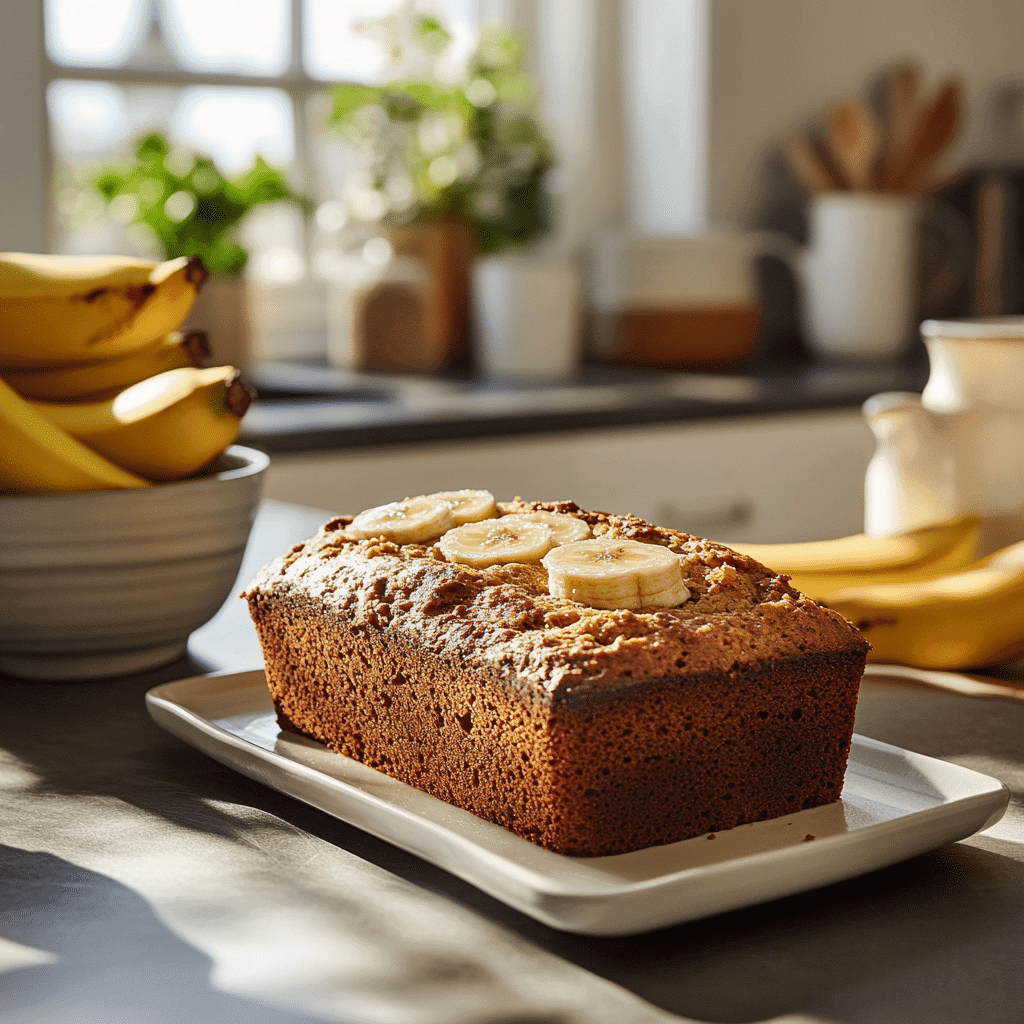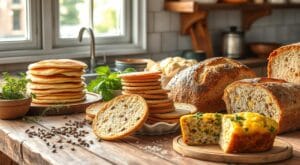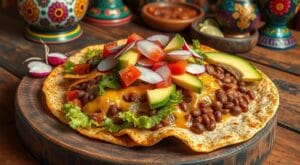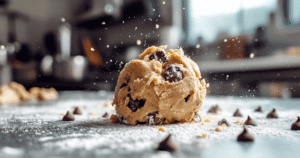Jump to:
Estimated reading time: 12 minutes
Table of contents
Introduction
Forgetting an ingredient while baking is more common than you might think, and in the case of banana bread, missing out on baking soda can lead to unexpected results. Baking soda plays a crucial role in the chemistry of banana bread, affecting its rise, texture, and flavor. But what exactly happens when you skip this essential ingredient? Understanding the impact of leaving out baking soda can help you adjust your recipe or even embrace a banana Bread with confidence. Whether you’re out of baking soda or experimenting with a new recipe, this guide will explore the nuances of baking without this key leavening agent.
Baking Soda Banana Bread vs. Baking Soda Free Banana Bread
The difference between traditional banana bread made with baking soda and its baking Soda Free counterpart is more than just a slight tweak in ingredients—it’s a fundamental change in how the bread rises, tastes, and feels. Here’s a closer look at how these two variations compare:
1. Leavening and Rise
Baking soda is a powerful leavening agent that reacts with acidic components in the banana bread batter—such as the bananas themselves or ingredients like yogurt or buttermilk—to produce carbon dioxide gas. This gas forms bubbles that expand as the bread bakes, giving the loaf its characteristic rise and airy texture, To learn more about how leavening agents work in baking, you can explore this detailed guide from the specialmagickitchen.
Without baking soda, Baking Soda Free Banana Bread relies entirely on the physical expansion of air and steam for lift, which is significantly less effective. As a result, the bread is much denser, with a tighter crumb structure. While traditional banana bread often has a light, fluffy texture, the soda-free version is more compact and cake-like, offering a heartier, more substantial bite.
2. Texture and Mouthfeel
The texture is one of the most noticeable differences between these two types of banana bread. Traditional banana bread, with baking soda, typically has a light, tender crumb with a slight chewiness on the edges. The bubbles created by the leavening process result in a bread that feels soft and springy.
On the other hand, Baking Soda Free Banana Bread has a denser, more uniform texture. It’s often described as moist and slightly heavier, lacking the sponginess that comes from the leavening reaction. This denser texture can be quite appealing to those who prefer a more filling, less airy bread. The mouthfeel is richer, with each bite feeling more substantial.
3. Flavor Profile
Baking soda not only affects the rise but also subtly alters the flavor of banana bread. When baking soda is used, it neutralizes some of the natural acids in the bananas and other ingredients. This neutralization process results in a more balanced flavor, where the sweetness and tanginess of the bananas are harmonized.
In contrast, Baking Soda Free Banana Bread often has a more pronounced banana flavor, as the acidity is less tempered. This can lead to a tangier, slightly sharper taste that brings the fruitiness of the bananas to the forefront. The absence of baking soda may also leave a hint of a starchy, almost raw flour taste, which is usually masked by the baking soda’s chemical reaction in traditional recipes.
4. Visual Differences
Another notable difference between these two types of banana bread is their appearance. Banana bread made with baking soda typically has a more uniform rise, often creating a rounded, domed top. The crust is usually golden-brown and slightly crisp, with a crumb that’s light in color due to the even browning throughout the loaf.
Without baking soda, Baking Soda Free Banana Bread may rise unevenly, leading to a flatter or even sunken appearance. The crust might be paler and softer, and the interior crumb tends to be denser and darker, reflecting the lack of aeration. This visual difference can be significant, especially if you’re accustomed to the more elevated appearance of traditional banana bread.
5. Shelf Life and Moisture Retention
Interestingly, Baking Soda Free Banana Bread can sometimes have a longer shelf life, retaining moisture better over time. The dense structure of the bread helps trap moisture, preventing it from drying out as quickly as traditional banana bread might. This makes the soda-free version particularly appealing if you plan to keep the bread for several days or freeze it for later consumption.
Traditional banana bread, while deliciously light and airy, may dry out more quickly due to its open crumb structure, especially if not stored properly. The lighter texture allows moisture to escape more readily, which can shorten its freshness period.
6. Nutritional Considerations
From a nutritional standpoint, the absence of baking soda reduces the sodium content in the bread, which can be a consideration for those monitoring their sodium intake. While the difference might seem minimal, it can be significant for individuals on strict low-sodium diets. Additionally, the denser texture of Baking Soda Free Banana Bread often means it’s more filling, potentially leading to smaller portion sizes and fewer calories consumed per serving.
While baking soda typically contributes to the light and fluffy texture we expect from banana bread, omitting it doesn’t mean the end result will be any less enjoyable. Understanding the trade-offs helps you make informed choices about what kind of banana bread you want to bake.

Ingredients Overview
What You’ll Need for Baking Soda Free Banana Bread
To prepare the no baking soda Banana Bread, gather these ingredients:
- 3 large, overripe bananas: The riper the bananas, the better, as they’ll add more moisture and sweetness to your bread.
- 1/2 cup of melted butter: Provides richness and moisture to the bread. You can use unsalted butter to control the salt content.
- 3/4 cup of granulated sugar: You can opt for brown sugar or a mix of both for a deeper flavor.
- 2 large eggs: These act as a binder and contribute to the bread’s structure and moisture.
- 1 teaspoon of vanilla extract: Adds a subtle layer of flavor that complements the bananas.
- 1 1/2 cups of all-purpose flour: The foundation of your bread’s structure.
- 1/2 teaspoon of salt: Balances the sweetness and enhances the overall flavor.
- Optional mix-ins: Consider adding chopped nuts, chocolate chips, or dried fruits for extra texture and flavor.
Substitutions to Customize Baking Soda Free Banana Bread
If you need to adjust the recipe to suit dietary needs or personal preferences, here are some effective substitutions:
- Whole Wheat Flour: For a healthier twist, substitute half or all of the all-purpose flour with whole wheat flour. This will give your bread a nuttier flavor and add more fiber, though it will make the bread denser.
- Coconut Oil: If you’re looking for a dairy-free alternative to butter, melted coconut oil works well. It adds a mild coconut flavor and maintains the moistness of the bread.
- Honey or Maple Syrup: For a natural sweetener alternative, replace sugar with honey or maple syrup. This will slightly change the texture, making the bread more moist and tender, but also a bit sweeter.
- Flaxseed Eggs: For an egg-free version, replace each egg with a “flaxseed egg” (1 tablespoon of ground flaxseed mixed with 3 tablespoons of water). This also adds extra fiber and omega-3 fatty acids.
- Buttermilk: To add some lightness back into your bread, consider using buttermilk in place of regular milk or water. The acidity in buttermilk can help activate any residual leavening properties from your other ingredients, though it won’t fully replace baking soda.
Step-by-Step Preparation of Baking Soda Free Banana Bread
Here’s how to make a satisfying Baking Soda Free Banana Bread step by step:
- Preheat Your Oven: Start by preheating your oven to 350°F (175°C). Prepare a 9×5 inch loaf pan by greasing it with butter or lining it with parchment paper to ensure easy removal after baking.
- Mash the Bananas: In a large mixing bowl, thoroughly mash the bananas using a fork or potato masher. The bananas should be smooth with just a few small lumps. This is the base for the bread’s moisture and flavor.
- Mix the Wet Ingredients: Add the melted butter to the mashed bananas and stir until well combined. Next, mix in the sugar, eggs, and vanilla extract, ensuring all ingredients are fully incorporated.
- Combine the Dry Ingredients: In a separate bowl, whisk together the flour and salt. Slowly add this dry mixture to the wet ingredients, stirring just until combined. Avoid overmixing, as this can make the bread tough.
- Incorporate Optional Add-ins: If you’re adding nuts, chocolate chips, or dried fruit, gently fold them into the batter at this stage. These add-ins can introduce more texture and bursts of flavor throughout the bread.
- Pour and Bake: Pour the batter into the prepared loaf pan, smoothing the top with a spatula. Place the pan in the center of the preheated oven and bake for about 60-70 minutes. Check for doneness by inserting a toothpick into the center of the bread; it should come out clean or with just a few crumbs.
- Cool Completely: Allow the banana bread to cool in the pan for about 10 minutes, then transfer it to a wire rack to cool completely before slicing. This cooling period is essential to let the bread set and achieve the right texture.
Enhancing Baking Soda Free Banana Bread
Even without baking soda, there are several ways to enhance your Baking Soda Free Banana Bread:
- Spice Mix: Add a teaspoon of cinnamon, nutmeg, or cardamom to the batter for a warm, spiced flavor. This can help compensate for the slightly different flavor profile caused by the absence of baking soda.
- Citrus Zest: Incorporate some lemon or orange zest into the batter for a refreshing twist. The acidity can also subtly help with the leavening process, although not as effectively as baking soda.
- Rich Additions: Swirl in some Nutella, peanut butter, or a cream cheese mixture before baking for added richness and flavor contrast. These ingredients also introduce a different texture, making each bite more interesting.
- Topping Ideas: Before baking, sprinkle the top of the loaf with turbinado sugar, oats, or chopped nuts. This not only adds a decorative element but also a satisfying crunch that contrasts with the dense interior.
- Vegan-Friendly Version: Make your banana bread vegan by using flax eggs and a plant-based butter alternative. Ensure the sugar is vegan-certified if you’re strictly following a vegan diet.
- Banana Bread Muffins: If you prefer individual servings, divide the batter into a muffin tin and bake for 20-25 minutes. This variation offers portion control and is perfect for on-the-go snacking.
How to Store Baking Soda Free Banana Bread
Proper storage is key to keeping your Baking Soda Free Banana Bread fresh and delicious:
- Room Temperature Storage: Store your banana bread at room temperature in an airtight container or wrapped tightly in plastic wrap for up to 3 days. This will prevent it from drying out while preserving its moisture and flavor.
- Refrigeration: If you need to keep the bread longer, store it in the refrigerator for up to a week. Be sure to wrap it well to protect it from absorbing any fridge odors and to maintain its texture.
- Freezing for Later: To freeze, let the bread cool completely, then wrap it tightly in plastic wrap and a layer of aluminum foil. It can be stored in the freezer for up to 3 months. When ready to eat, thaw the bread at room temperature or warm slices in the oven.
- Reheating Tips: Reheat slices of banana bread in the microwave for 10-15 seconds or in a 350°F oven for about 10 minutes to enjoy it warm. Reheating helps to restore some of the bread’s initial moistness and flavor.
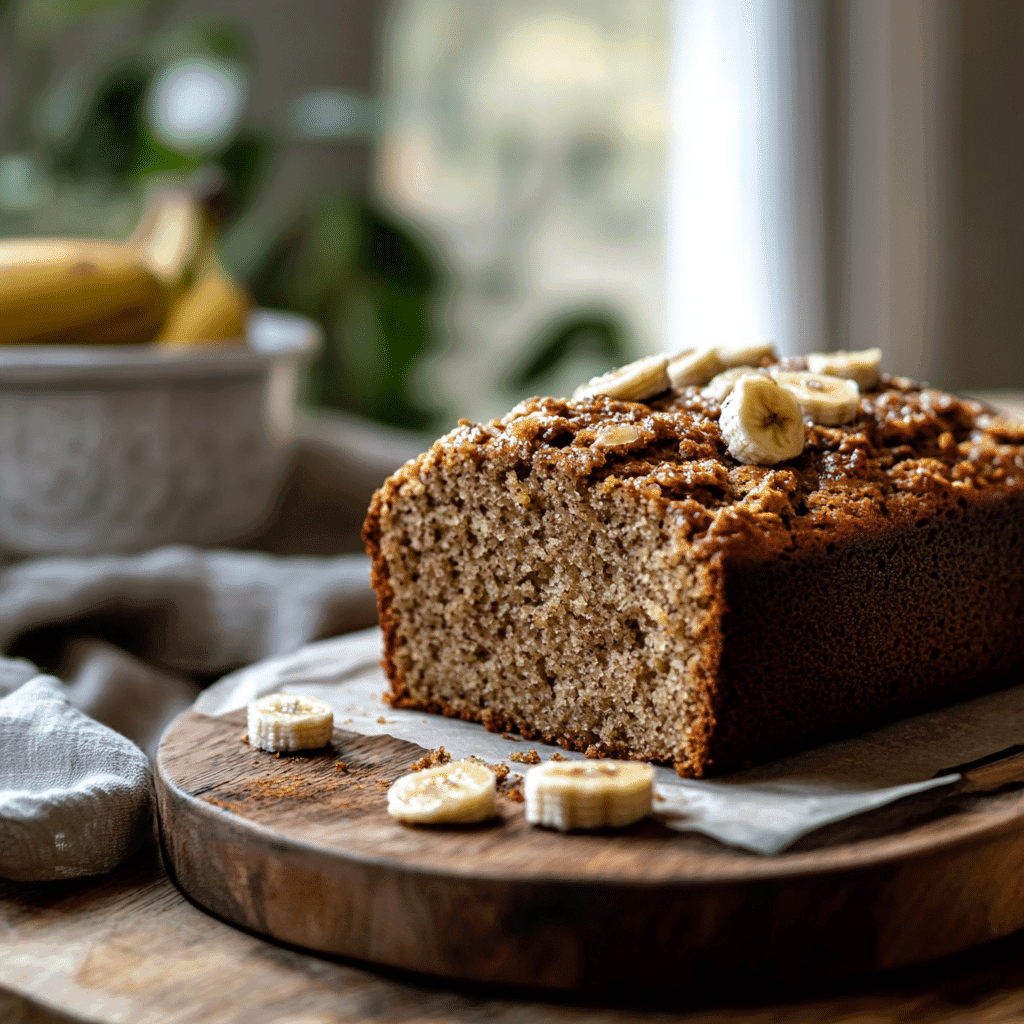
Nutritional Benefits of Baking Soda Free Banana Bread
Even without baking soda, Baking Soda Free Banana Bread offers several nutritional benefits:
- High in Potassium: Bananas are an excellent source of potassium, essential for maintaining proper heart function and muscle health.
- Lower Sodium Content: Omitting baking soda reduces the sodium content, which is beneficial for those managing their sodium intake.
- Natural Sweetness: The natural sugars in ripe bananas help sweeten the bread, reducing the need for excessive added sugars and making the bread healthier overall.
- Dietary Fiber: Using whole wheat flour or adding nuts and seeds can boost the fiber content, aiding digestion and keeping you full longer.
- Energy-Dense: Banana bread provides a quick source of energy, thanks to the carbohydrates in the bananas and flour, making it an ideal breakfast or snack.
FAQ About Baking Soda Free Banana Bread
What happens to the texture of banana bread without baking soda?
Without baking soda, banana bread will have a denser, more compact texture. It won’t rise as much, resulting in a heavier loaf with a moist crumb. This texture is often described as more cake-like rather than bread-like, which some people may prefer.
Is there a way to make banana bread rise without baking soda?
While baking soda is the most effective leavening agent for banana bread, you can try using baking powder instead. Baking powder contains both an acid and a base, allowing it to act as a leavening agent without the need for additional acidic ingredients. However, it won’t produce as much rise as baking soda, so the bread may still be denser.
Can I substitute baking powder for baking soda in banana bread?
Yes, you can substitute baking powder for baking soda, but you’ll need to use about three times the amount. For example, if the recipe calls for 1 teaspoon of baking soda, use 3 teaspoons of baking powder. Keep in mind that baking powder may slightly alter the taste and texture of the bread.
Will the banana flavor be stronger without baking soda?
Yes, omitting baking soda can make the banana flavor more pronounced. Baking soda neutralizes some of the acidity in bananas, so without it, the natural tanginess of the bananas comes through more clearly, creating a richer banana taste.
Conclusion
Forgetting baking soda in your banana bread doesn’t have to be a baking disaster. By understanding the changes in texture, flavor, and rise, you can adapt your recipe to create a delicious Baking Soda Free Banana Bread. While the bread will be denser and have a more intense banana flavor, it can still be a delightful treat with the right ingredients and techniques. Whether you’re making this bread due to dietary preferences, ingredient availability, or just curiosity, knowing what to expect ensures you’ll end up with a loaf that’s just as satisfying as the traditional version.
